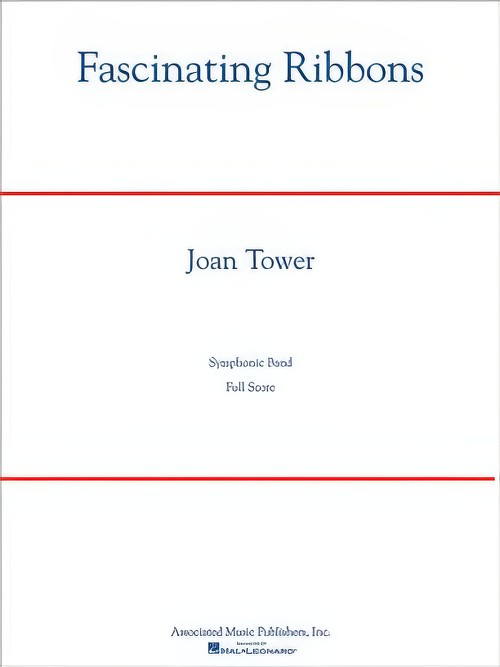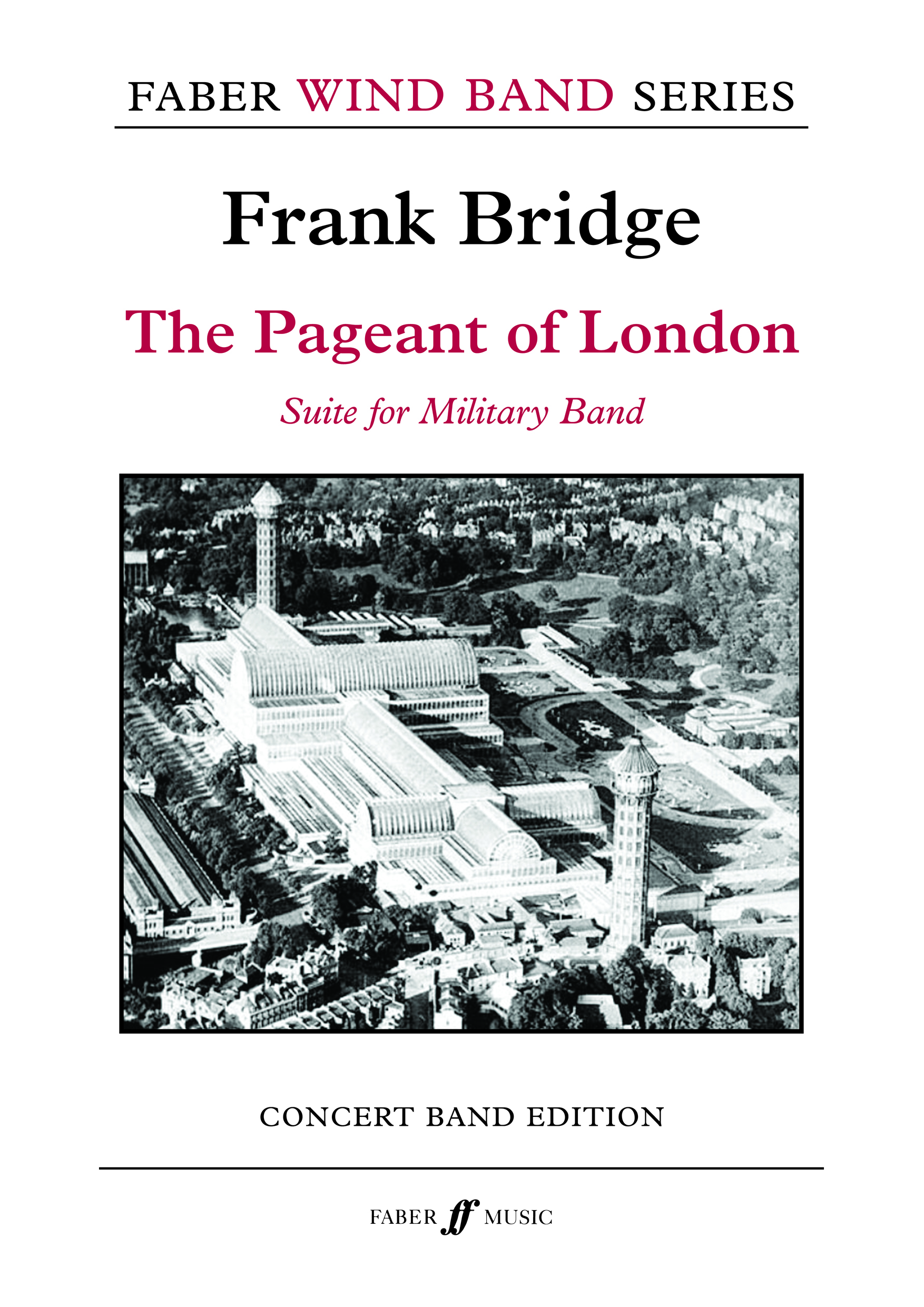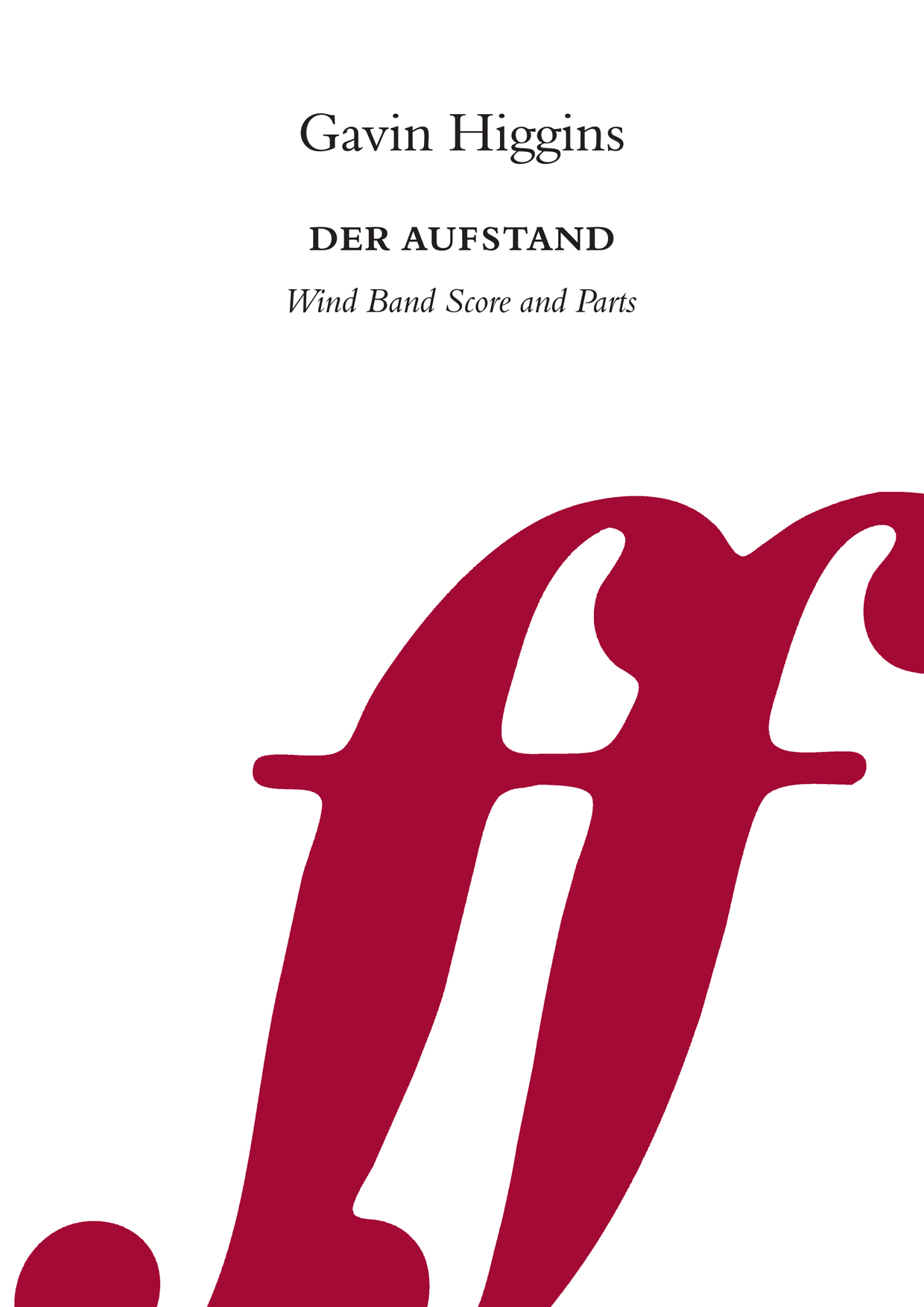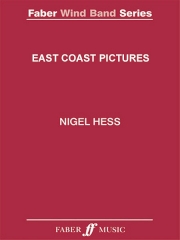Results
-
 £118.99
£118.99Fascinating Ribbons (Concert Band - Score and Parts)
G. Schirmer Concert Band - Grade 3-5Joan Tower's first major work for winds is characterized by an energetic style that is colorful, rhythmic, and muscular. The title refers to the many contours of motives shaped in curved "ribbon" patterns. Commissioned by the College Band Directors National Association and premiered at the national conference in 2001, this is an important addition to the contemporary repertoire for band. (Grade 5) (11:00) 11:00
Estimated dispatch 7-14 working days
-
 £76.99
£76.99Intrada & Wilhelmus Wind Band Set (Score & Parts)
John Blanken composed Intrada & Wilhelmus in 2002.The title speaks for itself. It's an introduction to the national anthem of The Netherlands; Wilhelmus. In this piece the national anthem is heared two times followed by a short postlude. 0:02:45
Estimated dispatch 7-14 working days
-
£54.95
Pound the Streets - Paul Lovatt-Cooper
A fast pounding rock number commissioned for the National Youth Brass Band of Scotland by the Scottish Brass Band Association for the Tartan Heart Festival 2010. Circa 3'30".
Estimated dispatch 3-5 days
-
£84.95
Wall of Sound - Paul Lovatt-Cooper
A real 'feel-good' piece that mixes the genres of dance, jazz, rock and funk that is an ideal showcase for band and soloists. Commissioned by Dr Nicholas Childs and Philip Biggs for the National Children's Band of Great Britain 2010. Circa 7'20".
Estimated dispatch 3-5 days
-
 £75.00
£75.00Two Giants and Ten Thousand Stones - Andrew Duncan
A descriptive work by Scottish composer Andrew Duncan telling the dramatic story of the legendary stone throwing fight between Finn McCool and Finn Gael which formed the spectacular basalt columns of the Giants Causway in Ireland and Fingals Cave in Scotland.The piece was commissioned by and written for the the National School Band Association for the NSBA 2005 County Antrim Youth Band Festival, and is scored for large wind orchestra with additional four Bass Drum parts to be played in the four corners of the hall (amongst the audience) to represent the huge stones crashing into the ground.Scored for:Piccolo;1st Flute;2nd Flute;Oboe;Cor Anglais (English Horn);1st Bassoon;2nd Bassoon;Contra Bassoon;Eb Clarinet;1st Bb Clarinet;2nd Bb Clarinet;3rd Bb Clarinet;Bass Clarinet;Soprano Sax;1st Alto Sax;2nd Alto Sax;Tenor Sax;Baritone Sax;1st Bb Trumpet;2nd Bb Trumpet;3rd Bb Trumpet
In stock: Estimated delivery 1-3 days
-
£95.00
The Pageant of London - Frank Bridge
Frank Bridge was one of the finest English composers of the first half of the 20th century. The Pageant of London is his only work for wind band, comprising of two marches, one scored from Bridge's best known organ piece and including the chimes of Big Ben, plus three short renaissance pastiche items, one arranged from Playford (later used by Peter Warlock in Capriol Suite). The music is tuneful, approachable and, in the words of wind band 'legend' Timothy Reynish makes a fine alternative to Holst's two suites, which were composed around the same time. Reynish has introduced this work to concert bands right across the world. It has been performed in USA and the Far East, recorded by the celebrated Kosei Wind Orchestra of Japan and also by the BBC National Orchestra of Wales in the Chandos edition of Bridge Orchestral Music.
In stock: Estimated delivery 1-3 days
-
£75.00
Der Aufstand - Gavin Higgins
Der Aufstand (German for 'riot') is not a descriptive work, nor is it solely based on the riots of 2011. It does, however, draw on the idea of opposing forces and escalating anger. The work falls into two contrasting sections that are linked by a series of repeated, 'screaming' chords. A slow build drives the first section from a single pitch to a blazing orchestral tutti. The second section is a fast and wild series of fanfares and driving rhythms that ultimately cannot be sustained. In many ways this mirrors the first. Both sections open on single tones (Bb and E) and grow to a climax of brass and hammered chords. The first performance took place on the last day of the 2012 Olympic Games. Der Aufstand is a noisy antithesis to the celebratory fanfare.Wind Band Grade: 6 (Professional and elite student and 'national' bands)Duration: 10 minutes
In stock: Estimated delivery 1-3 days
-
£95.00
The Gilded Theatre - Kenneth Hesketh
The Gilded Theatre was commissioned by the National Youth Wind Orchestra of Great Britain on the occasion of its fortieth anniversary. They gave the first performance on 10th August 2008, at St. John's Smith Square, London conducted by James Gourlay.The Gilded Theatre can, in some ways, be seen as a continuation of dramatic forms as presented in a previous piece by Hesketh, Diaghilev Dances. Unlike the Dances, however the music in The Gilded Theatre is conceived as one continuous span and stretches of music are also subtitled and refer to stock characters or scenarios redolent of the commedia dell'arte or 17th Century French Theatre.The subtitles are Rideau, Les Idiots Ou Les Amants, Le Combat Commence, Desespoir, L'apparition, Folie, La Mort, Rideau. The music narative progresses through dramatic, comedic, romantic and aggressive moods supporting the idea of the abstract play to which the the above subtitles refer. Throughout the piece the composer has sought to challenge the players both technically and emotionally, and it is the players themselves who are in fact the protagonists in the piece.
In stock: Estimated delivery 1-3 days
-
£70.00
Masque - Kenneth Hesketh
A Masque (short for Masquerade) has been defined by Historians as 'A revel in which Mummers or masked folk come with torches blazing into the festive hall and call upon the company to dance and dice' . The chaos of this dramatic dance is depicted in this 'Masque' by Hesketh. The main theme is bravura and is often present, in the background. The form of the piece is a simple scherzo-trio-scherzo. Colourful scoring (upper wind solos, trumpet and horn solos alternating with full bodied tuttis) with a dash of wildness may tease both player and listener to let their hair down a little!Masque has been transcribed for wind band by Kenneth Hesketh from his 'Scherzo for Orchestra', commissioned by the National Children's Orchestra in 1987.
In stock: Estimated delivery 1-3 days
-
£150.00
East Coast Pictures - Nigel Hess
East Coast Pictures was commissioned by the British Youth Wind Orchestra with funds from the National Westminster Bank plc. These three short 'pictures' were inspired by several visits to a small part of the American East Coast, an area that provides great extremes in the geography and the people. Movement 1: Shelter Island is a small island situated near the end of Long Island, a few hours drive east of New York. In the summer it becomes a crowded tourist trap; but in the winter it is gloriously deserted and bravely faces the onslaught of the turbulent Atlantic, shrouded in sea mists and driving rain. This 'picture' is a fond memory of a winter weekend on Shelter Island. Movement 2: In upstate New York lie the Catskills Mountains--an extraordinary combination of tranquillity and power, peace and majesty. Once seen, they call you back again and again. Movement 3: New York - or to be more precise, Manhattan. For anyone who is familiar with this bizarre and wonderful city, here is a 'picture' that needs no explanation. For those not yet hooked this is a foretaste of things to come!
In stock: Estimated delivery 1-3 days





